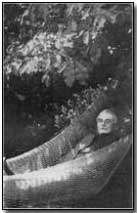Who's Who - Sir James Alfred Ewing
 Sir James Alfred Ewing
(1855-1935) served as head of the Royal Navy's intelligence department 'Room
40' from 1914-17.
Sir James Alfred Ewing
(1855-1935) served as head of the Royal Navy's intelligence department 'Room
40' from 1914-17.
Ewing's career was varied. Born in Dundee in 1855 the youngest of three sons, he studied for a degree in engineering at Edinburgh University before taking up a Professorship at the newly-established University of Tokyo in 1878, in Mechanical Engineering.
While in Tokyo Ewing undertook research into earthquakes - a topical subject given his location - and developed a new form of seismometer. Also studying magnetism he gave the name to the phenomenon of hysteresis.
Returning to his homeland in 1883 he became Professor at Dundee until 1890 when he was appointed Professor of Mechanism and Applied Mechanics at Cambridge University. He held the latter post until 1903.
It was during this period that Ewing published The Steam Engine and other Heat Engines. In 1897 he took part in trials of an experimental vessel named Turbinia, during which she reached the remarkable speed of 35 knots.
1898 saw Ewing elected to a Professorial Fellowship at King's. Five years later he left Cambridge to take on quite a different challenge: Director of Naval Education in Greenwich. The appointment was not as incongruous as it appeared: Ewing instituted a series of critical naval reforms based around naval engineering training, an area of great importance in an increasingly technological profession.
Although Ewing remained Director of Naval Education until 1916 he accepted a further appointment in 1914. With the outbreak of war he agreed to become head of what came to be known as 'Room 40' (named after his Admiralty room number), where he subsequently worked closely with William Hall. Room 40 was responsible for (predominantly) the decryption of intercepted German naval messages.
Early in the war the German Navy's Magdeburg codebook, which detailed its operating ciphers and codes, had been captured early in the war and Ewing's cryptographers used it against all intercepted transmissions of the German fleets. Thus the Royal Navy knew the position of every German ship for almost the entire duration of the war.
However Room 40's crowning achievement came in deciphering the Zimmermann Telegram in 1917 (which suggested a German plot to assist Mexico is annexing U.S. territory). The latter helped to bring the U.S. into the war on the side against the Central Powers.
In May 1916 Ewing accepted an invitation to become Vice-Chancellor of Edinburgh University, in the course of which he instituted an extensive series of effective reforms. In consequence of his Edinburgh appointment Ewing resigned from Room 40 the following year. William Hall inherited his mantle.
Hall's role at Room 40 was referred to widely in the popular press of the time. He was variously described as 'Eavesdropper Ewing', 'The Cipher King' and 'The U-boat Trapper'. His son published a memoir in 1939, The Man of Room 40: The Life of Sir Alfred Ewing.
Knighted in 1911, Sir James Alfred Ewing - who retired from Edinburgh University in 1929 - died in 1935.
A "Dixie" (from the Hindi degci) was an army cooking pot.
- Did you know?
